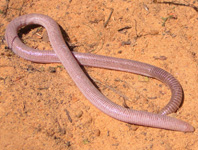Abstract
Until recent years, only a few scalibregmatid species have been known from the Nordic Seas, largely from shelf and coastal waters. Access to a large collection from deep areas has made it possible to provide more knowledge on the diversity of this group in the area. Pseudoscalibregma parvum (Hansen, 1879) is here redescribed. The species has a wide geographic distribution in the Nordic Seas, the Barents Sea, and the Kara Sea. Type specimens of Eumenia longisetosa Théel, 1879 were found to be similar to specimens of P. parvum, confirming the synonymy of the species. A new species, Scalibregma hanseni n. sp., is described from specimens found on the continental slope. It is particularly characterised by having three pairs of rather simple branchiae. Both P. parvum and S. hanseni have small spines in the most anterior chaetiger(s), resembling spines reported from a few other Pseudoscalibregma and Scalibregma species and supporting the need to emend the genus diagnosis of Pseudoscalibregma. Scalibregma abyssorum Hansen, 1879 was reassessed and considered to be a nomen dubium. Scalibregma inflatum, which has a wide distribution along the Norwegian coast and continental shelf, is found to be restricted to depths above about 900 m. Depths from 600–800 m on the continental slope represent a transition zone with fluctuations between temperate North Atlantic water (about 7°C) and cold Norwegian Sea water (below 0°C). The three species coexist in this zone, whereas P. parvum and S. hanseni n. sp. extend down to 1700 and 1200 m, respectively, on the slope at temperatures below 0°C.

